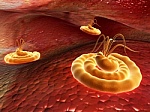HIV and Tuberculosis treatment and guidelines – Tuberculosis (TB) is a disease caused by a germ called Mycobacterium tuberculosis. It normally affects the lungs, but can also infect other parts of the body. Tuberculosis may be latent or active. Latent means that the bacteria are in the body but do not cause any symptoms. People with latent tuberculosis cannot spread the infection to others.
HIV and Tuberculosis treatment and guidelines !
Since HIV infection weakens the body’s natural defense mechanism, the bacteria can begin to multiply and cause active tuberculosis. This means that there will be symptoms.
A person with tuberculosis can infect other people only if the infection is present in the lungs. A person with HIV infection and tuberculosis is said to have AIDS. As far as possible, people with HIV infection should therefore avoid coming in close contact with any person with active tuberculosis.
They can be in contact with a person who has been taking medicines for a few weeks to cure tuberculosis. Some medical practitioners recommend that people who have voluntarily tested for HIV infection and are positive should also be tested for tuberculosis.
This is done through a skin test called tuberculin test. In this test, a small amount of testing fluid is injected just under the skin on the arm. The results are read after two or three days.
In case the test result is positive, it indicates latent tuberculosis. In such cases, additional tests such as x-ray of the chest and examination of the sputum are normally recommended to detect active tuberculosis if any.
In case, the skin test is negative for tuberculosis it is recommended that the test be repeated at least once a year, especially if there is a greater risk of getting the infection.
Some medicines are often recommended for people with latent tuberculosis in order to prevent it from becoming active. One of the most commonly used medicine is isoniazid along with a vitamin called pyridoxine to prevent peripheral neuropathy, a disorder of the nervous system.
This treatment is normally recommended for about 12 months because the tuberculosis bacteria die very slowly. Isoniazid is not recommended during the first three months of pregnancy.
In case isoniazid is not effective in preventing tuberculosis or is contraindicated, other medicines such as rifampicin are recommended to prevent active tuberculosis.
The medicines recommended for treatment of tuberculosis are the same for people with or without HIV infection. There are several medicines and the doctor is the best person to decide the combination of medicines that is most likely to be effective.
The symptoms normally disappear a few weeks after starting the treatment but since the bacteria takes a long time to die, the treatment is recommended at least for about six to nine months.
Some more HIV and Tuberculosis treatment and guidelines recommended !
Irregular treatment prevents complete cure of tuberculosis. It can also lead to drug not killed by the medicines being taken. People who have drug-resistant tuberculosis can transmit the resistant bacteria to others.
This means that the person who has contracted the infection will also not respond to the medicines. When several medicines fail to kill the bacteria, the tuberculosis is called “multi drug-resistant” tuberculosis.
In India, the number of people with drug resistant tuberculosis is increasing rapidly. Detailed information on the different medicines recommended for treatment of tuberculosis, their recommended doses, duration of treatment and common side effects can be discussed with the doctor or attending physician.
RELATED TOPICS
Medical billing and coding schools online
Health insurance companies in UK
Childcare centers in Singapore

